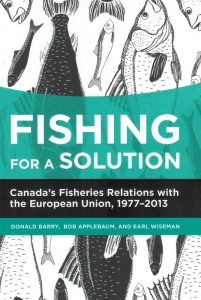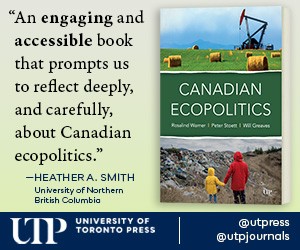How do you destroy a centuries-old industry? We managed. Ottawa for decades tried and failed to save the Atlantic northern cod fishery from European poachers. There were fishing limits and quotas, scientific panels and studies, diplomatic protests and many, many transatlantic meetings. “There are no gunboat solutions,” Joe Clark once remarked. As an old German philosopher put it, pacifism is no virtue in the toothless. The results are still cursed in Newfoundland & Labrador as the biggest layoff in Canadian history.
The cod fishery was a heritage industry that thrived for 400 years and helped build the federation. As late as the 1980s the fishery accounted for one-tenth of Newfoundland’s economy.
Its decline is one of the nation’s great commercial collapses, more devastating than the Avro Arrow or wind-up of the Hudson’s Bay fur trade. “Canada was preoccupied with rebuilding fish stocks; the European Union was preoccupied with finding outlets for its fishing capacity,” authors note. “The stage was set for confrontation.”
Fishing For A Solution is concise and unvarnished, a plain analysis on what happens when federal politicians defending provincial interests step in the ring with the European Union, population 500 million. It is a story of “good intentions and bad outcomes,” Fishing concludes. Its co-authors have the street cred to document the long, downward spiral: One is professor emeritus of political science at the University of Calgary; two are former chiefs of the Department of Fisheries’ international affairs directorate.
The facts still jolt. From the 1960s serial over-fishing threatened the trade, prompting Canada to begin fixing a series of offshore fishing limits: nine miles in 1964, extended to twelve miles in 1970, expanded to 200 miles by international treaty in 1977.
What could go wrong? Just about everything. It was a “very conservative management regime” in the face of “aggressive fishing practices” by European trawlers, authors conclude.
From 1981 Canada agreed to let E.U. countries fish within the 200-mile limit on the promise of “conservation cooperation” and “improved market access” to Europe: “The Canadian government made it clear that it would only allow fishing in Canadian waters by countries that entered into agreements with Canada, and that it would have to receive certain benefits in return.” Treaties were signed with the USSR, Norway, Poland, Spain and Portugal.
Year over year E.U. trawlers exceeded their quotas, the Canadian fishery expanded to keep pace and nobody seemed to keep an accurate count of just how many cod there were. Successive fisheries ministers, nine of them all told, jostled Europe for a workable scheme. By the time then-minister John Crosbie closed the fishery as unsustainable in 1992 – “I didn’t take the fish from the goddamn water,” he told demonstrators – the processing plants were shuttered and 190,000 jobs were lost.
And now? You can still see a cod packinghouse with gear in Bonavista, Newfoundland. It is a museum.
By Holly Doan
Fishing For A Solution: Canada’s Fisheries Relations With The European Union 1977-2013, by Donald Barry, Bob Applebaum & Earl Wiseman; University of Calgary Press; 150 pages; ISBN 9781-55238-7788; $34.95









